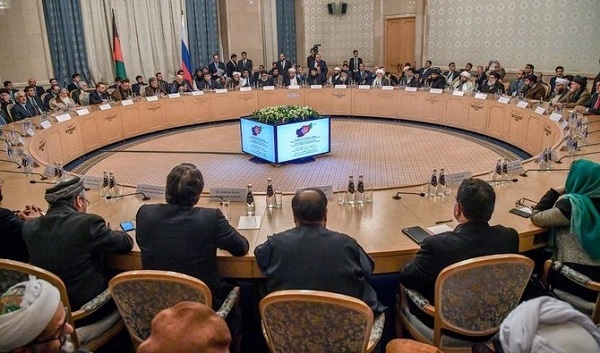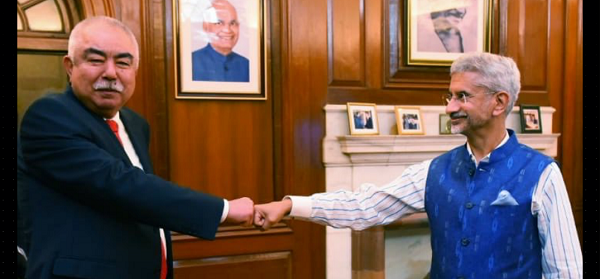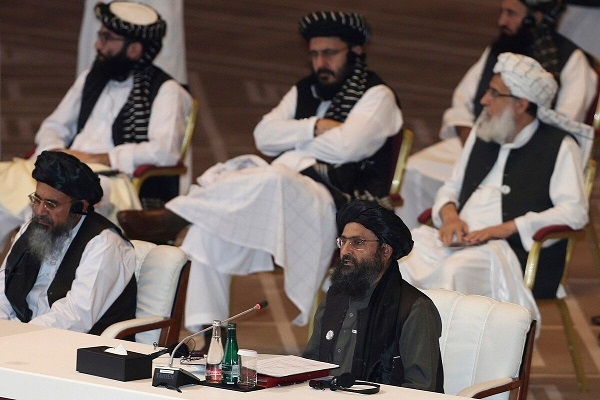India In Quad and Afghanistan Imbroglio
Total Views | 120
As on date, India is facing a dilemma of getting embroiled in Quad in East and Afgan Peace Talks in West. Both are lucrative proposals for India from Strategic Point of View. She wants to put pressure on China to solve Border Issue which erupted in May,2020. Afganistan being a buffer state for her in her strategic dealings with Pakistan; India also wants to be part of Afgan Peace Talks involving America, Russia, China, Pakistan, Iran and Afgan Taliban. Both seems to be materializing in 2021. Therefore, SWAT Analysis of both these happenings is necessary for its merits/demerits.
On East, India has joined Quad which has originated from cooperative efforts of countries in aftermath of Tsunami which engulfed the region in 2004. Formally launched in 2007, the initiative, thereafter, petered out. Quadrilateral Security Dialogue (QUAD) between India, America, Australia and Japan has had its ups and downs within gambit of actual or perceived threats. Then Japanese Foreign Minister, Mr Taro Kono revived Strategic Dialogue between Japan, America, Australia and India in 2017. Quad, was on its way to become a powerful serious forum. Evolution of such a forum typically begins at Senior Officer level followed by a Ministerial upgrade. Levels of seniority get roped in until the leaders of the countries take the reins. Chinese Authorities in Beijing had raised their chinki brows at inception of Quad. This was not, however, meant to reach the level of full blown frowns then, as it has now.

Though in November 2020, New Delhi invited Australia to participate in the annually held Malabar Naval Exercises in Bay of Bengal and Arabian Sea along with America and Japan, prospect of this misnamed “Asian NATO” was not to be taken too seriously. On other hand, American Administration under President Donald Trump did contemplate forming a Collective Forum with Teeth.Surprisingly, then American Secretary of State, Mike Pompeo was determined to use this group to combat China. “This group is for the soul of the world to make it operate as a rule based International Order System, contrary to a World Order dominated by a Coercive Totalitarian Regime in China” is what he declared with consent of his President. Unfortunately; America, Trump and Pompeo had to settle for a proposal of “Free and Open Indo Pacific” which was akin to an idea advanced by former Japanese Prime Minister Shinzo Abe in 2016.
However, this joint concept advocated by Donald Trump did not bring cheers to Chinese President Xi Jinping. At a press conference in December,2020, Chinese Foreign Ministry spokesperson Wang Wenbin, warned that China was against “Forming of Exclusive Cliques meant for Targeting/Undermining the interests of Third Parties (like China), as it was against thought process of conducive cooperation towards Mutual understanding and Trust between Regional Countries.” Foreign Ministers of Quad met in January, 2021 in Japan. Japanese Foreign Minister Toshimitsu Motegi declared in the Press Conference that “Candid talks were held regarding promoting cooperation toward the Free and Open Indo Pacific as well on Regional and Global Issues.” American spokesperson Ned Price stated that “Discussion also included the Priority of Strengthening democratic resilience in the Broader Region and maintaining our combined support for Freedom of Navigation and Territorial Integrity.”
Four month old Biden Administration in America is also for “Elevating the Status of Quad. American President Joe Biden held and addressed a Virtual Meeting of Prime Ministers of these Nations on 12 March, 2021. This demonstrated resolve of new American President to take Allies and Partnerships seriously. These Heads of State discussed “Threat of Covid, Economic Cooperation and Climate Crisis”. Naturally, China did figure up in their virtual chat/discussion. This meeting definitely has send very strong signal of common cause and purpose to China. This has also introduced and established Quad as a ‘New feature of Regular Diplomacy in Indo Pacific’.
Quad Nations declared that “Indo Pacific is dynamic and will remain Accessible, governed by International Laws and Bedrock Principles which have recently been put to test. These trials and tribulations have strengthened our resolve to reckon with most urgent global challenges together. We will tell China how we intend to proceed at Strategic Level”. After this virtual conference, American National Security Adviser Jake Sullivan confirmed that Joe Biden will take up Chinese Aggression in Taiwan, Senkakus and Eastern Ladakh during his talks with Chinese President in May,2021. Australian Prime Minister Scott Morrison said that “Quad will now be constant feature of Indo Pacific Engagement without unwanted features of ‘a big bureaucracy with a big secretariats’. It definitely
would be an Anchor of Peace and Stability in the Region”.

Each of the nations have their individual differences in how to deal with China. Australia is obsessed with ‘Foreign Interference and Chinese moves into Regional Pacific Politics’ and is banking on America to stem that influence. Priority of Japan is to have good relations with China while conceding ground to China as dominant Asian Pacific power. India has to adopt most cautious approach. Unlike Japan and Australia, India absolutely do not want a “Dominant Bully disguised as Strategic Primacy’ in the playground. So her relationship with China remains fractious. The Border Dispute in the Himalayan Region with a fierce competition to build infrastructure along with/ahead of adversary, turned bloody in June 2020 in Galwan Valley of Ladakh where 20 Indian Soldiers were martyred and over 45 Chinese Soldiers killed in retaliation. Blame Game for undue/unwarranted provocations is being traded by both with increasing frequency since April, 2020. However, a mutual disengagement between the Indian Army and the People’s Liberation Army from disputed points has commenced but is yet to be completed.
Despite much common ground, the prospects of the Quad flowering into a security arrangement that will ring fence China is yet to become a reality. Provocative as it may well be, China will exploit differences between these four powers and deal with each of them accordingly. She might even manipulate them to her advantage. India, therefore, cannot/should not rely completely on Quad but make/evolve plans to deal with China alone, if need be. On West, American plan for Afghanistan reflects the urgency with which she is looking for a way out, without giving up on any of the gains it has painstakingly made over years. Newly installed Biden Administration has finally declared its plan for Afghanistan and is picking up where Donald Trump left. Present American Secretary of State Antony Blinken has outlined a Four Step Proposal that, America believes, will help in accelerating the Stalled Peace Process.
First step is a UN called meeting between Foreign Ministers of Russia, China, Pakistan, Iran, India and America to discuss a common approach towards supporting peace. This will ensure that all Regional Countries and America are on the same frequency regarding their respective Political, Economic and Developmental Contributions to Afghanistan. India, who has made huge investment in Afganistan, has been advocating need for greater regional cooperation and is stressing the importance of a negotiation led by Afghan Government. Inclusion of India in this meeting underlines importance of India in Peace Process as only friend of Afganistan, who can advocate its best interest. India, who has been kept out of loop till now, is happy with this new invitation to attend even as a spectator.
Second proposal is a Draft Peace Agreement that would enable Kabul Government and Afgan Taliban to jumpstart discussions for Ceasefire Modalities, Development of Permanent Constitution and Future Government, and Formation of Transitional Government until a New Constitution and Permanent Government are formed. Nature of Executive, Legislation and Judicial Branches, Options for a Presidential or Parliamentary System of Governance and Judiciary with a separate High Council for Islamic Jurisprudence will entail inclusion of an unspecified number of Taliban members, thereby, setting the stage for power sharing between elected representatives and senior members of Afgan Taliban. India will definitely like to gain first hand information on the details of discussions on this proposal.

Third step is a senior level meeting between Kabul and the Taliban in Turkey to Finalise Peace Agreement. India is not in favour of Turkey because Ankara and Islamabad are close allies having Military and Defence Cooperation. Turkey is vocally critical of Indian Domestic Politics. But not much attention will be given to Indian objection as Turkey has stable ties with Iran, China and Russia; it is a Muslim Nation, member of NATO and a significant donor in terms of Monetary Aid and Troops to Afghanistan. So, naturally it will find favours of all except India. Final step in Washington Peace Plan is “Reduction in Violence” within ninety days as reduction in violence from Taliban will mean a reduction in violence from Afghan Forces. But in past, Taliban had always used ‘Reduction in Violence’ as an opportunity to extract leverage, rather than an opportunity to gain peace. India would be apprehensive about the outcome.
American Troops will leave Afganistan by 01 May,2021.She will, however, keep on giving Financial Assistance to Afghanistan,Troop withdrawal will be subject to Taliban ending its ties with Al Qaeda and other such groups that threaten Afghanistan. Presently, Taliban violence has reached its peak and Afghan Government is getting ready for “Ruthless Taliban Spring Offensive”. Biden Administration Plan indicates urgency with which America is looking for a way out, retaining all gains made over the years. America is pressurising Afgan Government on moving ahead quickly with reconciliation, with the present peace proposal as its only option.
India, while it is happy to be a part of the Regional Consortium of Nations charting Afgan Future, is not convinced about the proposed peace plan for one simple reason: An Interim/Power sharing Government gives enough power to the Taliban; this is as good as the Pakistan Military Establishment calling the shots. This has always been, and always will be, unacceptable to India It is high time that America, China and Russia realise that as well. India is caught in American vortex against China on High Sea as well prospects of increased Pakistani influence in Afganistan through its ties with Afgan Taliban. She has to trade wisely with strategic caution; Not to antagonise China, honour American strategic wish and keep a watchful vigil on Pakistan.
.
.





